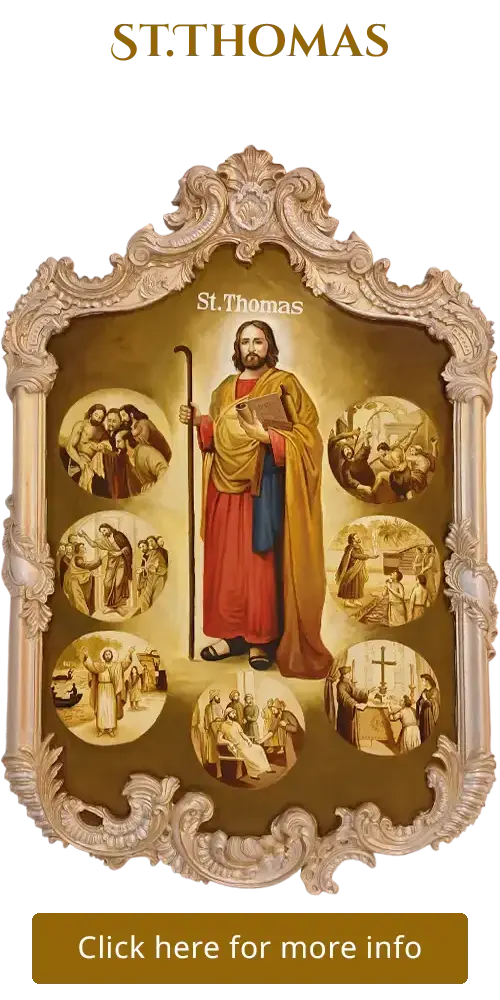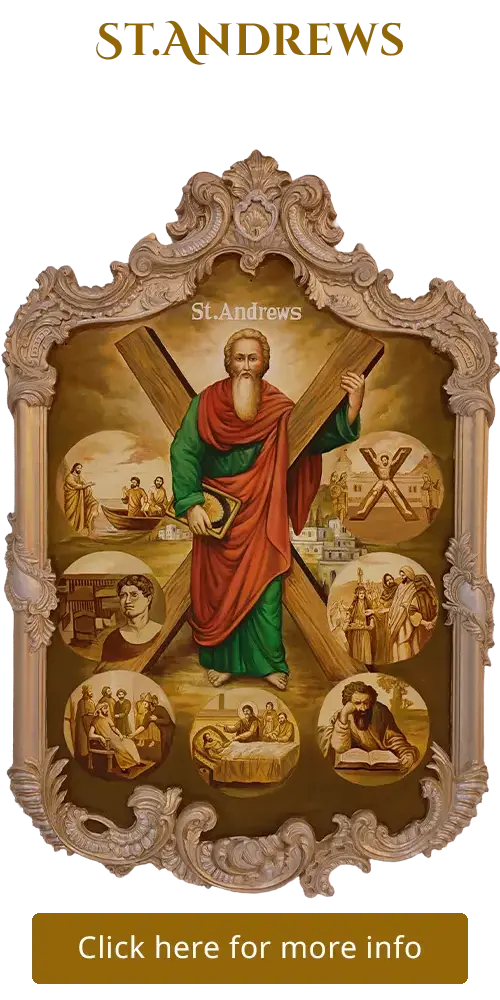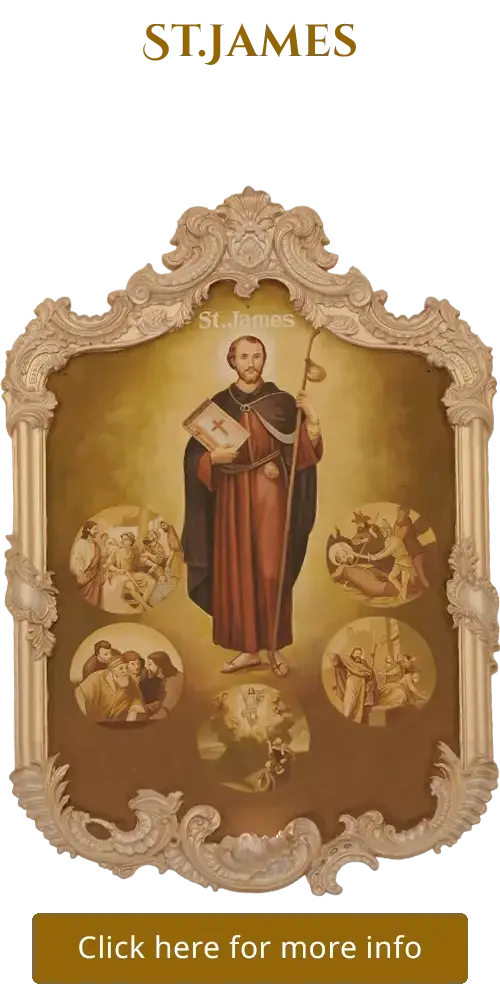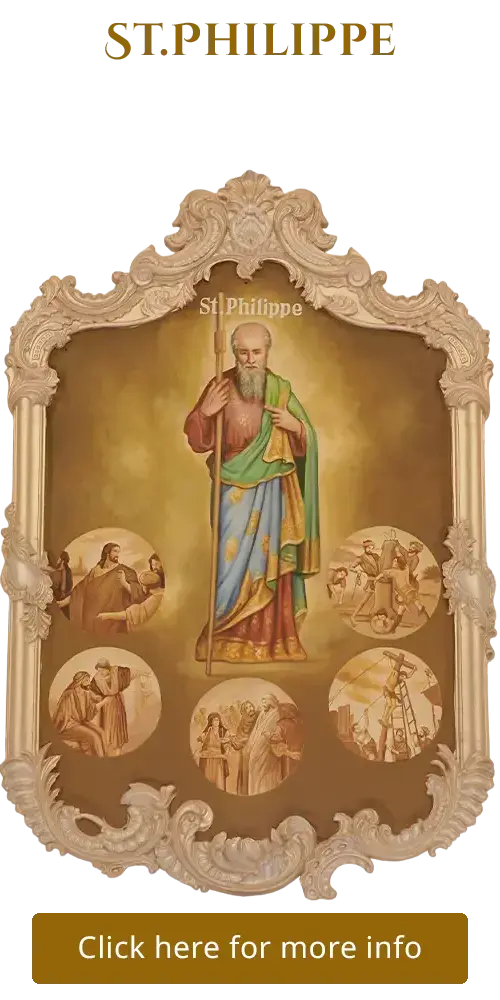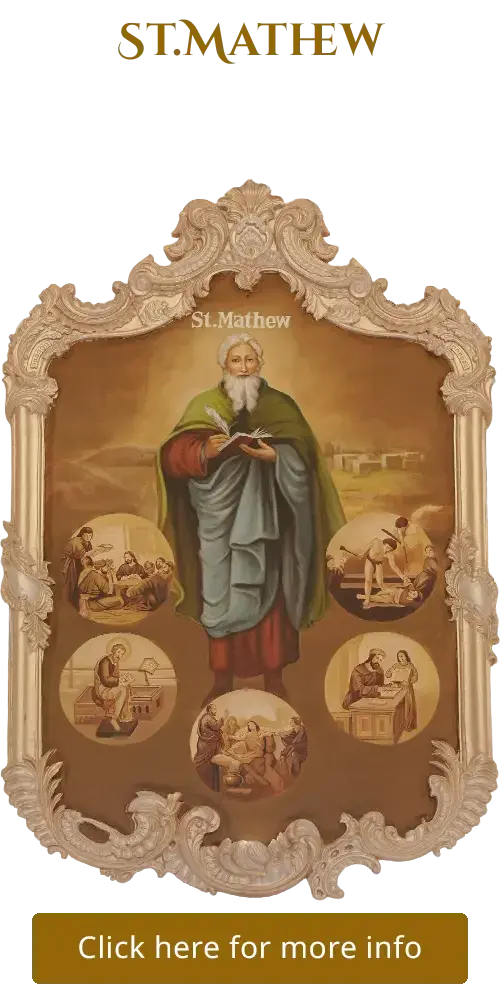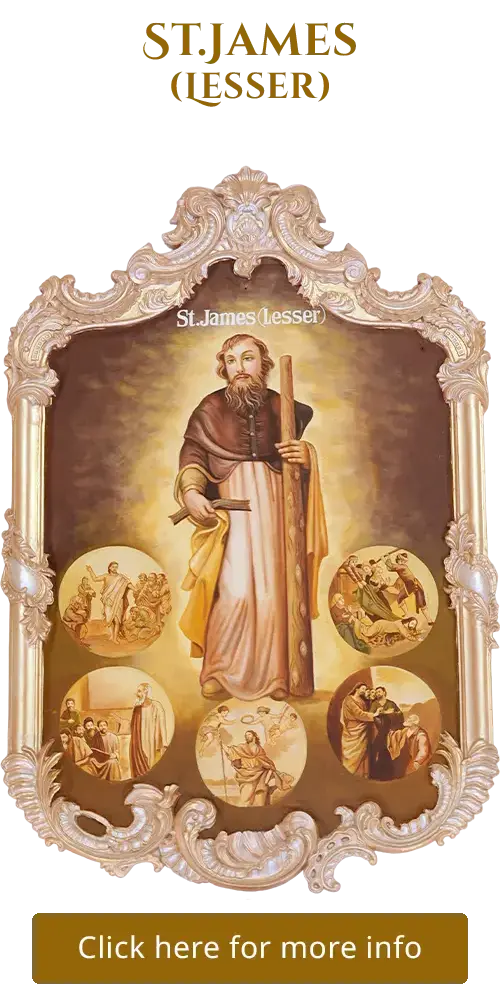St. Thomas
Inside Paintings - North Wall
St. Thomas
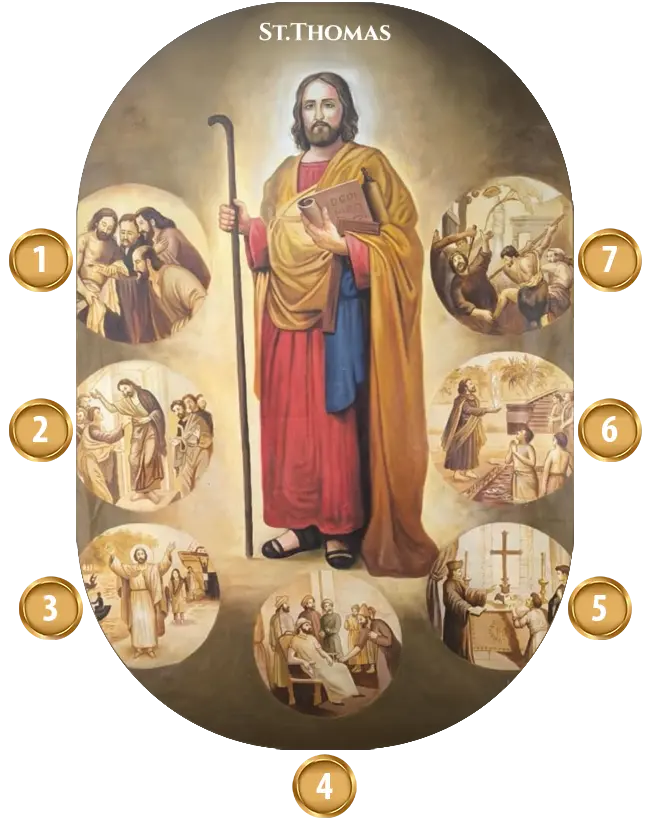


1. St. Thomas and the Risen Christ: From Doubt to Faith in the Upper Room
Biblical Reference: John 20:19-31
Description: Jesus appearing to his disciples after his resurrection, focusing on the disciples’ fear, Thomas’s doubt, and the subsequent affirmation of faith. Jesus first appears to the disciples, who are gathered with the doors locked, and offers them peace. He then shows them his hands and side, demonstrating that he is truly resurrected.
2. The Doubting Thomas Incident
Biblical Reference:Luke 20:25, John 20:25-29
Description: St. Thomas is remembered for being absent from the Upper Room the first time Jesus appeared to the disciples after His Resurrection. Thomas dismissed the accounts of the others by saying, “Unless I see the mark of the nails in His hands and put my finger into the nail marks, and put my hand into His side, I will not believe”.
Eight days later Thomas made his act of faith. He fell at the feet of Jesus and said, “My Lord and my God!” and Jesus replied, “Because you have seen me, Thomas, you believed. Blessed are they that have not seen, and yet believe”. This incident gave rise to the expression “doubting Thomas.”
3. St Thomas’s Missionary Work in India
Historical Reference: Various historical and literary sources, including the Acts of Thomas, a 3rd-century Syriac work.
Description: St. Thomas arrived by sea, landing at Muziris (present-day Kodungallur) in Kerala around 52 AD. He then traveled and preached in various parts of Kerala and Tamil Nadu, establishing churches and baptizing people. He is particularly associated with the establishment of early Christian communities in Kerala, known as Nasranis, and is revered as a key figure in the history of Christianity in India.
He is credited with founding churches in various locations in Kerala, including Kodungallur, Palayur, Kottakkavu, Kokkamangalam, Niranam, Kollam (Quilon), and Nilakkal (Chayal).
4. King Gondophares receives a letter from St. Thomas
Historical Reference: From Hutchinson’s History of the Nations, published 1915.
Description: In 1st-century AD traditions, the Indo-Parthian King Gondophares I, founder and king of the Indo-Parthian Kingdom who ruled c. 20-10 BC, received a letter from St. Thomas announcing the apostle’s intention to visit India, according to some historical accounts. The letter is said to have been sent from Syria (or Persia) to Gondophares, who ruled in Gandhara (present-day Peshawar).
5. The Miraculous Cross of St. Thomas the Apostle at Meliapore in India
Historical Reference: Various historical and literary sources, including the Acts of Thomas.
Description: The cross is specifically located in Meliapore (modern-day Mylapore, Chennai) in India, a place historically linked to St. Thomas’s ministry and martyrdom.
This particular image is a historical print from ‘China Monumentis Illustrata,’ a work by Athanasius Kircher, a 17th-century German Jesuit scholar.
6. St Thomas showing the sign of water to the natives
Historical Reference: “The Acts of the Apostle Thomas” by Prof. M M Ninan; “Madras District Gazetteers Malabar,vol.i” by Evans, f.b.
Description: When St. Thomas landed at Palayur, he witnessed the sight of Hindu Brahmins, after their ablutions in a local tank. They were offering prayers by chanting mantras (the Vedic tradition of India for spiritual transformation), hymns to god in the form of Argyam or Tharpanam (water held in the palms) to the Sun god, a practice also said to be followed in Harappan and Persian cultures. Amused by the sight of water being thrown up by the Brahmins, from the palms of their hands, which was falling back, he challenged the Brahmins stating that the water they were offering was not being accepted by the Sun god as it was falling back into the tank. He made a deal with them stating that his God would accept the offer of water if he threw it up in the same way as they did: the water would not fall back. If he proved this then his God was superior and the Brahmins would have to embrace Christianity. He performed this miracle (summoned the Holy Trinity, completed the sign of the Cross and threw water held in his palms up into the air, which remained still in the air at a height) and with this miracle he converted a number of Brahmins and Jews in Palayur to Christianity. Thereafter he baptised the converts in a nearby water tank, now known as “Thaliyakulam” which is referred to as The First Baptism Pond, “The Birthplace of Christianity in India”.
7. Martyrdom of St. Thomas
Historical Reference: Tradition and early Christian writings
Description: It portrays the martyrdom of St. Thomas the Apostle, which historically occurred in Chennai, India, on July 3, 72 CE.
According to tradition, after converting several high-ranking locals and refusing to worship Hindu idols, he was attacked by local priests and soldiers.
They pierced him with spears or javelins while he was praying near a cave at St Thomas Mount. He bled out on the ground, faithful to the end. His remains were buried in Mylapore.


